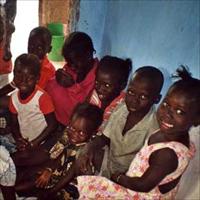NIGER: Population explosion threatens development gains

If the people of Niger (Nigeriens) remain uninformed about family planning and keep reproducing at the current rate the country’s population will more than quadruple by 2050, imposing unmanageable demands on the economy, social services and the environment, according to research by Niger’s national statistics agency.
Niger’s population is counted by the Institute for National Statistics (INS), which compiles its own data through national surveys and censuses and by collaborating with UN agencies. It calculates the current rate of population growth is 3.3 percent every year.
If that growth continues, there will be 56 million people living in Niger by 2050, compared to 13.5 million today, the INS says. In 1960, Niger’s population was just 1.7 million.
“We surveyed the country and found that the average number of children per mother is 7.1. However, we also asked them how many they would like to have - women said nine and men said 12, but some families said they would like 40 or 50 children,” INS deputy director Adamou Soumana told IRIN.
“The only way to put it, is this is a society with a very pro-natal philosophy that encourages procreation.” Soumana said.
Just 5 percent of Nigeriens use family planning and contraception, according to INS. “People aren’t informed enough about the negative consequences of having so many children,” Soumana added.
Implications
The 85 percent of Nigeriens who currently rely on rain-fed, subsistence agriculture to feed and support themselves are going to be hardest hit as millions more people compete for the same amount of farmland on which to grow food.
Potentially, Niger’s cultivatable land could be even less because of soil degradation and depending on the effects of climate change. The Sahel has recently been identified by researchers as one of the regions most likely to be adversely affected by climate change in terms of food production.
“The increase in the population will continue to accentuate the cereal production and wood-for-fuel deficits which seem to have started in the 1980s, if alternative solutions are not found,” the INS states.
Niger’s population will also quickly overtake the government’s ability to provide adequate health, education, jobs and even water points - tasks that it is already failing at today, with a fraction of the population.
Action plan
Niger’s government this year put in place a “national action plan” to curb population growth which the INS says would reduce the total projected population in 2050 to 33.3 million - still almost three times its current level.
The government wants the number practising family planning to increase from 5 to 15 or 20 percent by 2015. The INS says 20 percent of women claim to want it.
The plan also calls for information campaigns to educate religious leaders and especially women about the availability and importance of family planning.
It proposes that the prevalence of early marriages be cut. Currently, every second girl is married and likely to be procreating before the age of 15, according to the Ministry of Population. Raising the marriage age to 18 would take up to four years off a woman’s reproductive life.
The benchmark will be 2015 when population growth should have slowed to 2.5 percent and the average number of children produced per woman should be five.
Diadié Boureima, deputy representative of the UN Fund for Population Affairs (UNFPA) in Niger, said the task was a critical one.
“If the demographics continue, Niger cannot develop,” he said. “All the resources the country has will be going into social services and nothing will be left for investing in the economy. The government recognises this and is acting accordingly.”
 Back and Next - Back and Next
Back and Next - Back and Next See Also - See Also
See Also - See Also